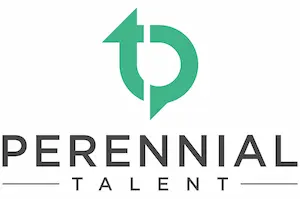Competency Profiles: How to Identify the Competencies Needed for Success
To thrive, organizations need to take the time to define the competency profiles needed for success across all roles. By describing it, you can measure it and make better hires, onboard people, manage their performance, and help them to learn and to grow while navigating their own career paths.
When describing the competencies needed for successful performance you will need to build a competency profile, which describes the critical 6 to 8 competencies needed for successful performance for a given role. But how do you go about building these profiles? There are six steps that you can take to ensure the success of your project.
Step 1
Create a competency framework
Before you can start creating competency profiles, you need a blueprint for what you will be building. This helps to ensure the consistency of how you describe work across the organization. For example, what will your competencies look like, how many competencies will you include in a profile, what types of competencies will you include, how will you handle leadership positions, how many job families/groupings of jobs and profiles will you build? This blueprint or framework is a critical first step towards building competency profiles.
Step 2
Plan and measure the change
By defining the key competencies needed for successful performance, you are introducing change into the organization. It important to start thinking about how you monitor and manage this change (e.g., what will your communication strategy look like, have you identified adopters and champions, etc.). You will also want to identify measures that you can track before you start using competencies and after you implement them.
Step 3
Identify a pilot group of jobs
It is a good idea to start with a pilot group so that you can tailor the process to your needs and optimize it as you go. Start with one job family (e.g., HR, finance, sales, cybersecurity, etc.) with about 6 roles or competency profiles. The pilot group can be one where there is a lot of interest in defining competencies or one where there is a great need (e.g., the area is growing or mission-critical).
Step 4
Identify subject matter experts
You will need to engage subject matter experts (SMEs) to pick the most critical competencies. SMEs should have a deep understanding of the requirements of the role(s). They should be representative and fully cover all aspects of the role(s) you are profiling (e.g., geography, function, years of experience). They should also be credible and respected within the organization to build more buy-in for the initiative. You will need to identify 2-4 SMEs per job family.
Step 5
Identify the competencies
Start by creating a draft profile or shortlist of competencies. Then you will need to consult with the 2-4 SMEs to select the 6-8 most critical competencies and proficiency level/stage of development for each role.
Step 6
Validate the competency profiles
The final step of building competency profiles is to conduct a validation session to ensure that the competencies and the stages of development or levels of competency proficiency are accurate. To validate the competency profiles, it is often helpful to bring in a second group of 1-3 subject matter experts and have them confirm that the profiles accurately reflect the critical requirements for the job and that there are no missing competencies. One additional benefit of validation is that it allows you to engage additional stakeholders to build buy-in for the project.
By following these six steps, you can build competency profiles that are easy to use and apply to all your HR practices!


